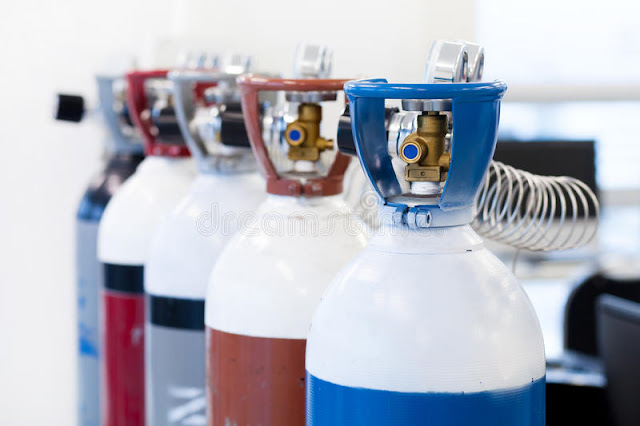Taking Care of CNG Cylinders in Industrial Spaces
Compressed Natural Gas or CNG cylinders are nothing like
regular fuel tanks. They are pressurized because they make it important for
their users to maintain, replace, and discard them with utmost caution.
Improper care can potentially lead to safety hazards, which are very avoidable
if the right steps are taken. Knowing the cylinder's useful life and following
proper replacement guidelines can also make a world of difference.
In this guide, we address a few questions that can help you
take better care of your CNG cylinder.
How to Determine the Useful Life of your CNG Cylinder?
- The expiration date listed on the label is a tell-tale sign of its useful life. CNG Cylinder Manufacturers are often mandated to include the 'do not use after the date on their cylinders. For an average CNG cylinder, the useful life is from 15 to 20 years.
- Provided there is no corrosion or damage; the cylinders can be used safely until their marked expiration date. Damages such as impacts and abrasions can seriously impact the useful life of the CNG cylinder.
- The determination of the useful life also depends on the material of the cylinder and its properties. These can include glass, steel fibre, carbon fibre or aramid.
- If a cylinder is used, it will have a shorter life cycle. If a used vehicle is added to a fleet, the manager must ensure that the remaining cylinder is fit enough to support operations and has been inspected recently. Also, the expected useful life of the cylinder should be at par with that of the vehicle.
- End-users need to be educated on the cylinder's life and its replacement and maintenance decisions' economic ramifications. This fact is key to making an informed purchase which makes things simple in the long run.
How to Perform Proper Maintenance and Inspection?
Although indeed, the cylinder can't be used past the CNG cylinder manufacturer's expiry
date, fleet managers can still take measures to use it as efficiently as
possible in its lifespan. These include proper installation, shielding from the
debris on the road and protection from curb side impact damage. A good rule of
thumb is to inspect your cylinder once every three years or in 36,000 miles by
a certified professional. Regular inspections ensure that problems are detected
and solved promptly, with the least repercussions.
Buying a good quality tank in the first place is a
preventative measure. To identify them, you can lookout for a consistent
surface and uniform appearance. Knowing the manufacturing process and the
machinery behind the tank is also an important step. Apart from this, ensure that
the product is labelled correctly with all the important information.
How to know your Cylinder needs to be replaced?
Vehicles can last for years, but this doesn't mean that the
CNG cylinder in it doesn't need to. Check the expiration on the cylinder, first
and foremost. In case it has deteriorated, you can consider replacing it
earlier, which can be detected by regular inspections. Inspections need to be
carried out following the instructions given by the manufacturer. Looking for
signs of corrosion on the tank's neck and valve area is a good bet. Bent tubing
or a marred surface can indicate impact when inspected further. Possible causes
of impact include collisions, abrasions or cuts, exposure to fire,
over-pressurization etc.
In case you do witness any damage, head straight to the CNG cylinder manufacturer's inspection
manual to determine the degree of damage. This prompt action will help you
decide if the tank needs a minor repair or a return to the manufacturer.
Is it a Good Idea to Use a Cylinder Beyond its Expiry?
The short answer? No.
Operating a damaged tank or using a cylinder past its expiration date can be a catastrophe waiting to happen. Never use an expired cylinder simply because the manufacturer won't guarantee its safety beyond that date. Fueling and refueling can cause a lot of stress and pressure on the cylinder, which it might not be able to withstand if it is past its prime. Gambling with safety is never a good idea as these cylinders have a pressure of about 3600 psi which can cause serious accidents.




We are a Professional Turnkey Project Management company. We supply plants and machinery for Lube Oil Blending Plant, Grease Manufacturing Plant, and various other Petrochemical Industries. On the other hand, , we have got expertise in different plants such as Cooking Gas Cylinder mfg. Blow Moulding plant, etc.
ReplyDeleteWe have supplied plants and Machinery around the globe such as Africa, Asia, the Caribbean, Central America, Europe, North America, etc lubricant oil manufacturing plant